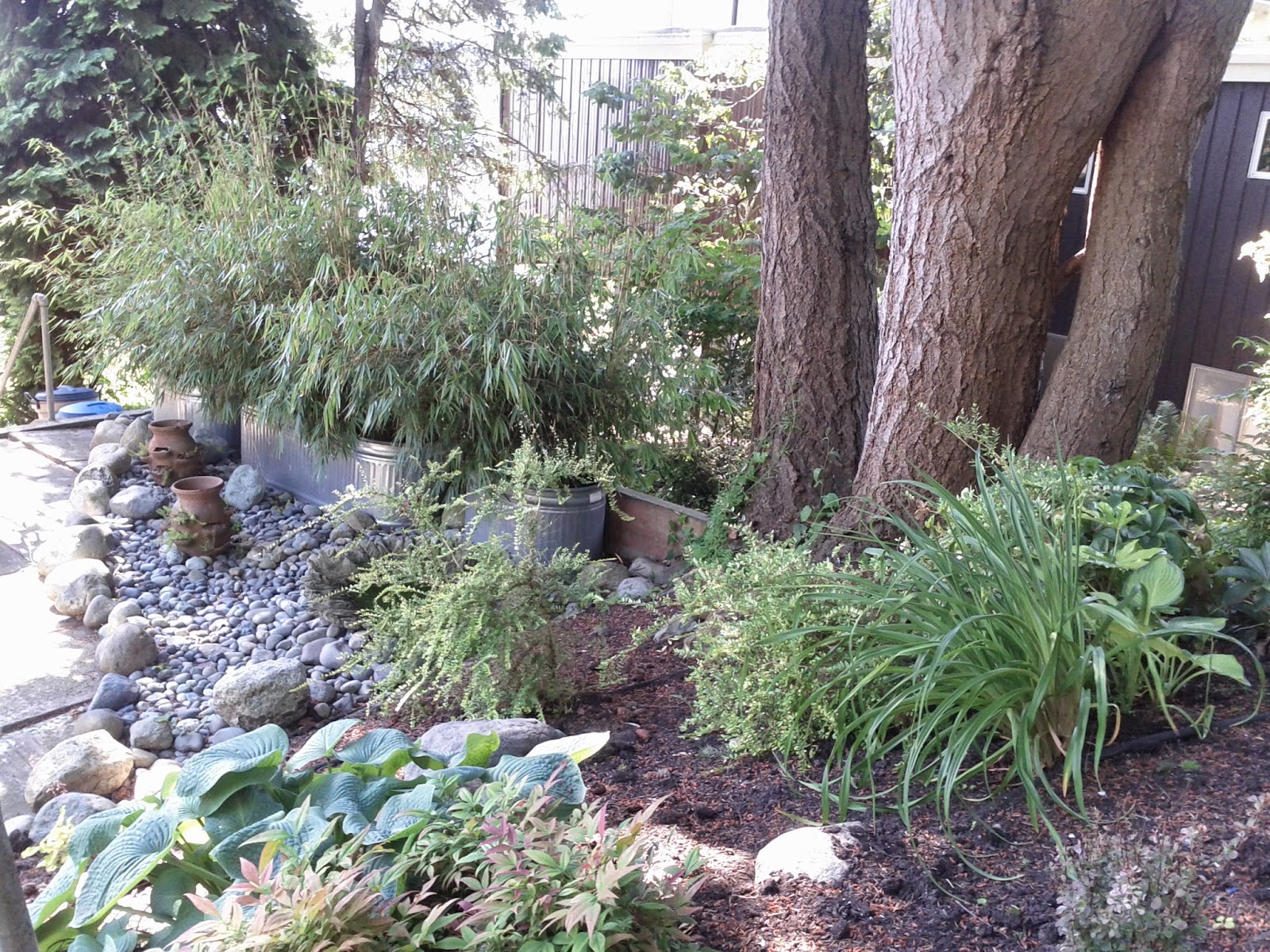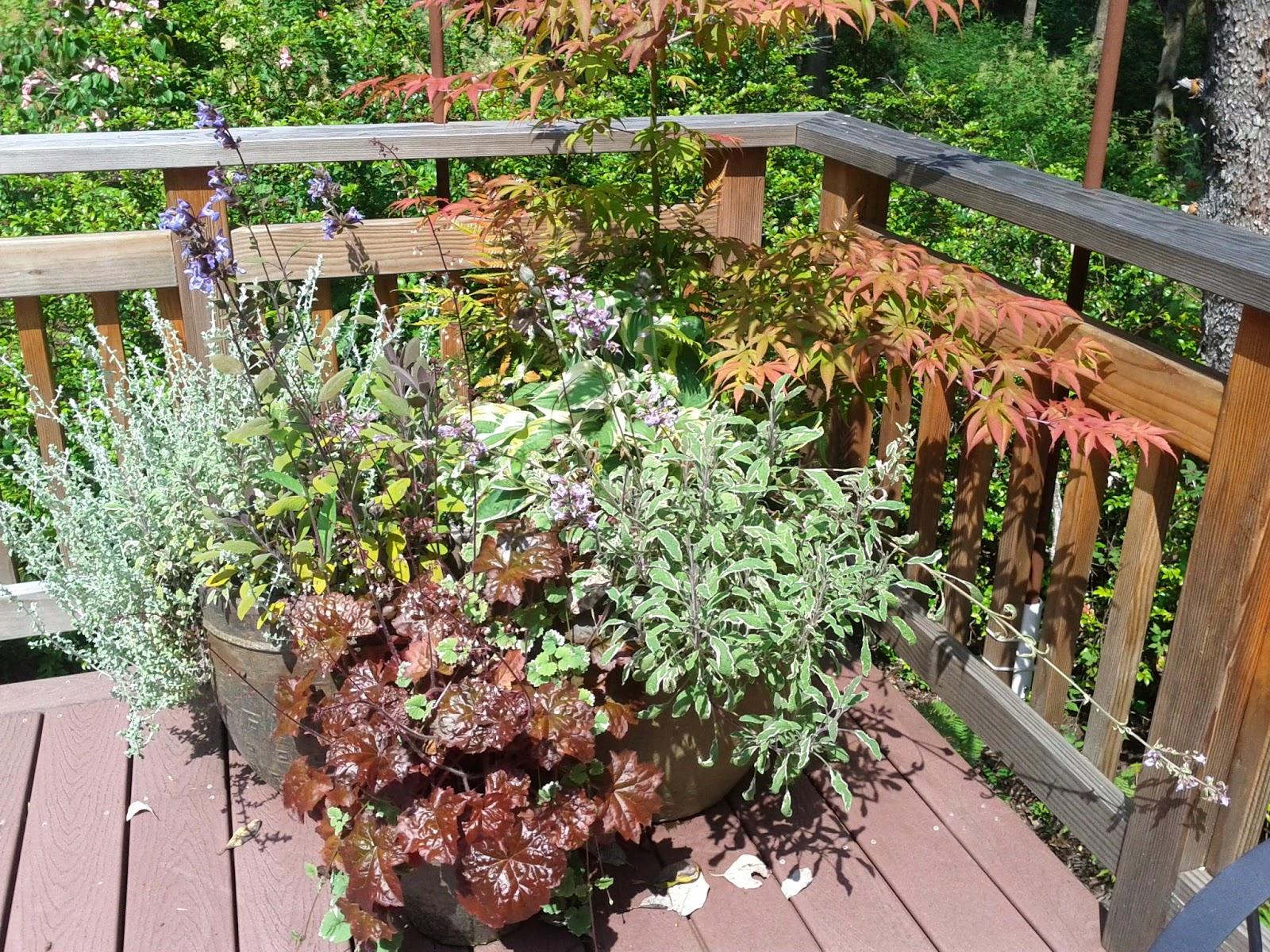 |
| Abandoned Robin's nest |
 |
| Red Legged Frog |
According to the Washington Department of Fish and Wildlife, a typical backyard in Washington State houses about 25 species of birds and mammals. This means we, as land owners, are all habitat managers. Everything we do in our yards affects these birds and mammals as well as insects, reptiles, and amphibians. Of course, our yards are just little square pieces that together make up the much larger habitat of our little island. Each of our yards is managed differently, some as vast expanses of mown lawn, some fenced against the deer like Fort Knox, some so natural, you hardly notice where the yard ends and the wild environment begins. Because of this, the natural ecosystem of Vashon and habitats within have mostly been destroyed or become fragmented. In addition to habitat destruction and fragmentation, many other factors stress native wildlife populations. These include: exposure to predators due to lack of cover, malnutrition due to a lack of diversity among cultivated plants, invasive species that compete for limited resources, and exposure to harmful pesticides due to conventional gardening methods.
So what is there to do? I can tell you we're not going to do a perfect job, any of us. Having yards, fences, cultivated/non-native plants, structures, driveways, cars all negatively effect the natural environment. I manage my yard for wildlife as best I can, but it's fenced in like Fort Knox to keep the deer and predators out and my dogs and ducks in. I know it's not ideal, but I'm not going to take it down because it would adversely affect our family's lifestyle. However, my yard is small and the holes in my fence are large enough to let smaller beasties pass freely. I am blessed with neighbors to the South and East who also feel strongly about gardening for wildlife and I have a lovely 5 acres of unoccupied forest to the West. These factors all effect how I choose to manage the habitat on my property. I feel sure that each one of you have your own reasons for managing your slice of habitat the way you do. I just hope that this information helps you to make the best decisions for your habitat that you can.
Here are some great ways to manage your yard (a.k.a. habitat):
1. Don't keep it too clean. Leaves and debris on the ground provide homes for bumble bees and other small beasties like mice, moles or voles, frogs, and snakes. They also provide foraging ground for insect loving birds like towhees.
2. Leave stumps and snags (dead trees) standing if it's safe. Snags not only house and feed many species, their tenants feed others outside of the tree. Snags provide important habitat for many species and food for the animals that feed on those housed within.
3. Plant trees and bushes together creating many useful hiding and nesting places.
4. Create additional habitat by putting up appropriate bird, bat, and insect houses. It's important to research what kind of houses are needed by various species and also to keep them clean and safe for the animals.
5. Utilize plants that provide food for wildlife. When you do this, it's important not to deadhead all your plants in the late summer and fall, as these dead flowers become seed heads, rose hips, and berries that help sustain wildlife through the winter months.
 |
| These photos are of my veggie garden. You can barely see any veggie plants, but already, I am nearly harvesting more vegetables than my family of three can consume. |
6. Provide shallow water and mud. Make sure there is a way to get out of the water in case a bird or insect gets in over it's head. Did you know that many butterflies require mud to provide them with much needed mineral nutrients?
7. If you choose to feed with feeders, be sure to keep them clean and in areas that are safe from cat predation.
8. Speaking of cat predation, it's best to keep cats indoors as much as possible. Please see the links below regarding cat awareness.
9. Use fewer and safer chemicals. Man-made chemicals in the garden pose health risks to people, pets, and all wildlife. They often destroy the soil structure which, in turn, creates more pest problems and more reliance on the chemicals. Use mulch, manual weeding and pest picking, learn to love some of the weeds (they are often medicinal, good for the soil, or good in a salad!), plant plants in the right place, and take good care of your soil. Healthy soil makes for healthy plants and healthy plants resist pests!
 |
| These weeds have been embraced. |
10. Last, but most certainly not least, pass it on! Talk to your neighbors. Try to create a neighborhood wildlife corridor. Garden with kids. Spread the word!
 |
| Chautauqua Children's Garden with Gerie Wilson, Zea, and Buddy |
Granted, my little slice of habitat (where most of these pictures are from) is not especially "cultivated" per say. It's not as neat as I'd like it to be, but I can tell you I get a lot of beauty and enjoyment from watching it grow. I spend very little time and money on my landscape (as I don't have much of either of those things). What I love most about my little slice is the nature of it all. I love watching the birds nest and rear young. I love watching the crows and squirrels interact with my ducks and tease my dogs. I also love watching my daughter discover her natural world as she explores the many nooks and crannies of our small yard. And finally, I love how my neighbors react to my yard with pleasure as new plants grow, flowers bloom, and seasons change. Every style is different. Every family has different needs. However, I'm sure that every one of you could make a little more room for wildlife in your little slice of habitat. Consider it a challenge.
Resources:
Landscaping with deer resistant plants:
http://wdfw.wa.gov/living/deer.html#landscaping
Plants to attract pollinators:
http://www.xerces.org/wp-content/uploads/2014/09/MaritimeNorthwestPlantList_web.pdf
Living with Wildlife
http://wdfw.wa.gov/living/
Creating a backyard sanctuary
http://wdfw.wa.gov/living/backyard/
Cat awareness:
http://www.abcbirds.org/abcprograms/policy/cats/index.html
http://www.abcbirds.org/abcprograms/policy/cats/materials/predation.pdf
Alternatives to pesticides:
http://www.pesticide.org/
http://www.pesticide.org/resources
Wildlife corridors:
http://www.smithsonianmag.com/smart-news/norway-has-highway-bees-180955703/?utm_source=twitter.com&no-ist
http://conservationcorridor.org/digests/corridor-science/
Vashon Resources:
Vashon Maury Island Land Trust
http://vashonlandtrust.org/
Vashon Nature Center
http://vashonnaturecenter.org/










































































